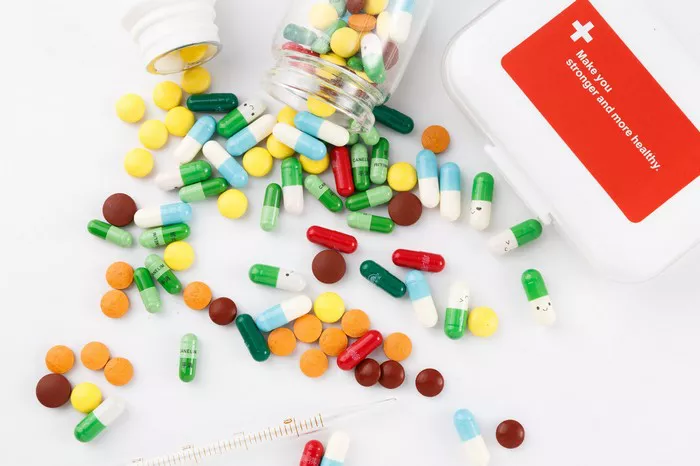Body Dysmorphic Disorder (BDD) is a mental health condition characterized by an obsessive focus on perceived flaws or defects in one’s appearance, which are often unnoticeable to others. This disorder can lead to severe emotional distress and impaired functioning in daily life. In this comprehensive article, we will explore the definition, symptoms, causes, diagnosis, and treatment options for Body Dysmorphic Disorder. We will also discuss the impact of BDD on individuals and society, as well as strategies for supporting those affected by this condition.
Definition of Body Dysmorphic Disorder
Body Dysmorphic Disorder is a psychological condition in which individuals experience intense preoccupation with perceived imperfections in their physical appearance. These perceived flaws are either non-existent or minor but are perceived as significant and distressing by the individual. BDD can affect any part of the body, but common areas of concern include the skin, hair, nose, and weight.
The Diagnostic and Statistical Manual of Mental Disorders, Fifth Edition (DSM-5), classifies BDD under Obsessive-Compulsive and Related Disorders. It emphasizes that the preoccupation with appearance must cause significant distress or impairment in social, occupational, or other important areas of functioning to qualify as BDD.
Symptoms of Body Dysmorphic Disorder
Obsessive Focus on Appearance
Individuals with BDD spend a considerable amount of time thinking about their perceived flaws, often for several hours each day. This obsessive focus can interfere with their ability to concentrate on other activities and responsibilities.
Compulsive Behaviors
To cope with their distress, individuals with BDD may engage in repetitive behaviors or mental acts. These can include excessive grooming, mirror checking, skin picking, seeking reassurance, and comparing their appearance to others. These compulsions are performed in an attempt to reduce anxiety but often exacerbate the distress.
Avoidance
People with BDD may avoid social situations, work, school, or other activities where they fear their perceived flaws might be noticed or judged. This avoidance can lead to significant social isolation and impaired functioning.
Distorted Body Image
Individuals with BDD have a distorted perception of their appearance. They may believe that they look ugly, deformed, or abnormal, even though others do not see them this way. This distorted body image is resistant to reassurance and feedback from others.
High Levels of Anxiety and Depression
The intense preoccupation with appearance and the resulting social and functional impairments can lead to high levels of anxiety and depression. Many individuals with BDD experience feelings of shame, low self-esteem, and hopelessness.
Causes of Body Dysmorphic Disorder
Genetic Factors
Research suggests that genetic factors may play a role in the development of BDD. Individuals with a family history of BDD or other mental health disorders, such as obsessive-compulsive disorder (OCD) or depression, may be at higher risk of developing the condition.
Neurobiological Factors
Neurobiological factors, including abnormalities in brain structure and function, may contribute to BDD. Studies have shown that individuals with BDD may have differences in brain regions involved in visual processing and emotional regulation.
Environmental Factors
Environmental factors, such as childhood experiences, trauma, and cultural influences, can also contribute to the development of BDD. Negative experiences related to appearance, such as teasing or bullying, can increase the risk of developing BDD. Additionally, societal and cultural pressures that emphasize physical appearance and beauty standards can exacerbate body image concerns.
Psychological Factors
Certain personality traits and psychological factors, such as perfectionism, low self-esteem, and high levels of self-criticism, are associated with BDD. These traits can make individuals more vulnerable to developing obsessive concerns about their appearance.
Diagnosis of Body Dysmorphic Disorder
Clinical Assessment
The diagnosis of BDD typically involves a comprehensive clinical assessment conducted by a mental health professional. This assessment includes a detailed interview to gather information about the individual’s symptoms, history, and impact on functioning.
Diagnostic Criteria
According to the DSM-5, the diagnostic criteria for BDD include:
Preoccupation with one or more perceived defects or flaws in physical appearance that are not observable or appear slight to others.
Repetitive behaviors (e.g., mirror checking, excessive grooming) or mental acts (e.g., comparing appearance with others) in response to appearance concerns.
Significant distress or impairment in social, occupational, or other important areas of functioning.
The appearance preoccupation is not better explained by concerns with body fat or weight in an individual whose symptoms meet diagnostic criteria for an eating disorder.
Differential Diagnosis
It is important to differentiate BDD from other mental health disorders that involve body image concerns, such as eating disorders, obsessive-compulsive disorder, and social anxiety disorder. A thorough assessment helps to ensure an accurate diagnosis and appropriate treatment.
Treatment of Body Dysmorphic Disorder
Cognitive-Behavioral Therapy (CBT)
Cognitive-Behavioral Therapy is the most effective treatment for BDD. CBT for BDD focuses on identifying and challenging distorted beliefs about appearance, reducing compulsive behaviors, and developing healthier coping strategies. Key components of CBT for BDD include:
Cognitive Restructuring: Identifying and challenging negative thoughts and beliefs related to appearance.
Exposure and Response Prevention (ERP): Gradually facing feared situations related to appearance without engaging in compulsive behaviors.
Behavioral Experiments: Testing out beliefs about appearance and its impact on others to gather evidence and modify distorted thinking.
Medication
Selective Serotonin Reuptake Inhibitors (SSRIs) are commonly prescribed to help reduce the symptoms of BDD. SSRIs can help alleviate obsessive thoughts and compulsive behaviors, as well as improve mood and anxiety levels. Medication is often used in combination with CBT for optimal results.
Support Groups
Support groups can provide valuable emotional support and practical advice for individuals with BDD. Connecting with others who share similar experiences can help reduce feelings of isolation and provide a sense of community.
Psychoeducation
Psychoeducation involves providing individuals and their families with information about BDD, its symptoms, causes, and treatment options. Understanding the disorder can empower individuals to seek help and engage actively in their treatment.
Mindfulness and Acceptance-Based Therapies
Mindfulness and acceptance-based therapies, such as Mindfulness-Based Cognitive Therapy (MBCT) and Acceptance and Commitment Therapy (ACT), can also be beneficial for individuals with BDD. These approaches emphasize accepting negative thoughts and feelings without judgment and focusing on living a meaningful life despite the presence of distressing thoughts.
Impact of Body Dysmorphic Disorder
Emotional and Psychological Impact
BDD can have a profound emotional and psychological impact on individuals. The constant preoccupation with appearance can lead to significant anxiety, depression, and feelings of shame and embarrassment. Many individuals with BDD struggle with low self-esteem and may experience suicidal thoughts or behaviors.
Social Impact
The social impact of BDD is substantial, as individuals may avoid social interactions, relationships, and activities due to their appearance concerns. This avoidance can lead to social isolation, loneliness, and difficulties in maintaining personal and professional relationships.
Occupational Impact
BDD can also affect an individual’s ability to function effectively at work or school. The preoccupation with appearance and associated compulsive behaviors can interfere with concentration, productivity, and overall performance. Some individuals may avoid work or school altogether due to their distress.
Economic Impact
The economic impact of BDD includes costs related to treatment, loss of productivity, and disability. Individuals with BDD may require long-term therapy and medication, and their inability to work or perform daily tasks can lead to financial strain.
Conclusion
Body Dysmorphic Disorder is a serious mental health condition that involves an obsessive focus on perceived flaws in one’s appearance. It can lead to significant emotional distress, social isolation, and impaired functioning. Understanding the symptoms, causes, diagnosis, and treatment options for BDD is essential for providing effective support and care to those affected by the disorder. Through early intervention, evidence-based treatments, and a supportive environment, individuals with BDD can achieve improved mental health and quality of life.
[inline_related_posts title=”You Might Be Interested In” title_align=”left” style=”list” number=”6″ align=”none” ids=”8871,8867,8863″ by=”categories” orderby=”rand” order=”DESC” hide_thumb=”no” thumb_right=”no” views=”no” date=”yes” grid_columns=”2″ post_type=”” tax=””]
































